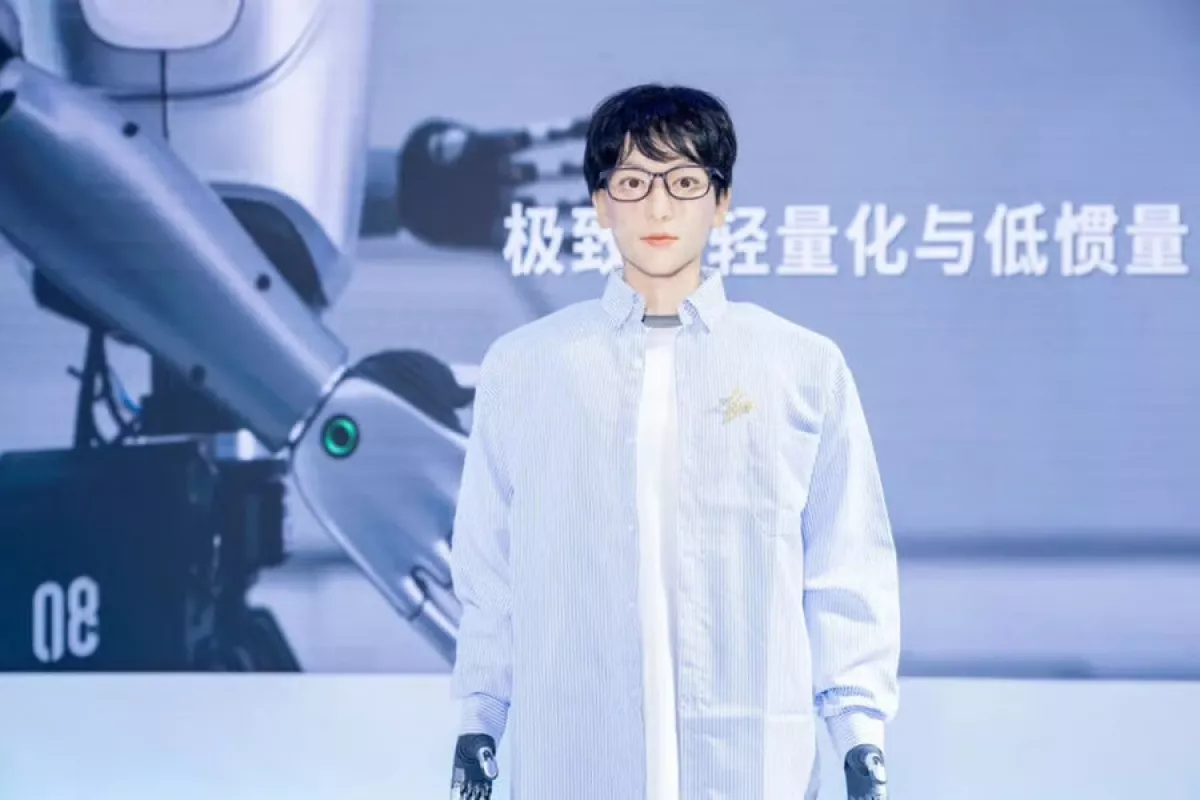Brand Stories
Artificial intelligence cost tech workers their jobs?

If you read the typical 2025 mass layoff notice from a tech industry CEO, you might think that artificial intelligence cost workers their jobs.
The reality is more complicated, with companies trying to signal to Wall Street that they’re making themselves more efficient as they prepare for broader changes wrought by AI.
A new report Wednesday from career website Indeed says tech job postings in July were down 36 per cent from their early 2020 levels, with AI one but not the most obvious factor in stalling a rebound.
ChatGPT’s debut in late 2022 also corresponded with the end of a pandemic-era hiring binge, making it hard to isolate AI’s role in the hiring doldrums that followed.
“We’re kind of in this period where the tech job market is weak, but other areas of the job market have also cooled at a similar pace,” said Brendon Bernard, an economist at the Indeed Hiring Lab. “Tech job postings have actually evolved pretty similarly to the rest of the economy, including relative to job postings where there really isn’t that much exposure to AI.”
The template for tech CEO layoff notices in 2025 includes an AI pivot
That nuance is not always clear from the last six months of tech layoff emails, which often include a nod to AI in addition to expressions of sympathy.
When he announced mass layoffs earlier this year, Workday CEO Carl Eschenbach invited employees to consider the bigger picture: “Companies everywhere are reimagining how work gets done, and the increasing demand for AI has the potential to drive a new era of growth for Workday.”
Autodesk CEO Andrew Anagnost explained that a need to shift resources to “accelerate investments” in AI was one of the reasons the company had to cut 1,350, or about nine per cent, of workers.
The “Why We’re Doing This” section of CrowdStrike CEO George Kurtz’s announcement of five per cent job cuts said the cybersecurity company needed to double down on AI investments to “accelerate execution and efficiency.”
“AI flattens our hiring curve, and helps us innovate from idea to product faster,” Kurtz wrote.
It’s not just U.S. companies. In India, tech giant Tata Consultancy Services recently characterized its 12,000 layoffs, or two per cent of its workforce, as part of a shift to a “Future-Ready organization” that would be realigning its workforce and “deploying AI at scale for our clients and ourselves.”
Even the Japanese parent company of Indeed and Glassdoor has cited an AI shift in its notice of 1,300 layoffs at the job search and workplace review sites.
AI spending, not replacement, is a more common factor
Microsoft, which is scheduled to release its fourth-quarter earnings Wednesday, has announced layoffs of about 15,000 workers this year even as its profits have soared.
Microsoft CEO Satya Nadella told employees last week the layoffs were “weighing heavily” on him but also positioned them as an opportunity to reimagine the company’s mission for an AI era.
Promises of a leaner approach have been welcomed on Wall Street, especially from tech giants that are trying to justify huge amounts of capital spending to pay for the data centers, chips and other components required to power AI technology.
“It’s this sort of double-edged sword restructuring that I think a lot of tech giants are encountering in this age of AI, where they have to find the right balance between maintaining an appropriate headcount, but also allowing artificial intelligence to come to the forefront,” said Bryan Hayes, a strategist at Zacks Investment Research.
Google said last week it would raise its budget for capital expenditures by an additional US$10 billion to US$85 billion. Microsoft is expected to outline similar guidance soon.
The role of AI in job replacement is hard to track
One thing is clear to Hayes: Microsoft’s job cuts improve its profit margin outlook for the 2026 fiscal year that started in July.
But what these broader tech industry layoffs mean for the employment prospects of tech workers can be harder to gauge.
“Will AI replace some of these jobs? Absolutely,” said Hayes. “But it’s also going to create a lot of jobs. Employees that are able to leverage artificial intelligence and help the companies innovate, and create new products and services, are going to be the ones that are in high demand.”
He pointed to Meta Platforms, the parent company of Facebook and Instagram, which is on a spree of offering lucrative packages to recruit elite AI scientists from competitors such as OpenAI.
The reports published by Indeed on Wednesday show that AI specialists are faring better than standard software engineers, but even those jobs are not where they have been.
“Machine-learning engineers — which is kind of the canonical AI job — those job postings are still noticeably above where they were pre-pandemic, though they’ve actually come down compared to their 2022 peak,” said Bernard, the Indeed economist. “They’ve also been impacted by the cyclical ups and downs of the sector.”
Economists are watching for AI’s effects on entry-level tech jobs
Tech hiring has particularly plunged in AI hubs such as the San Francisco Bay Area, as well as Boston and Seattle, according to Indeed.
But in looking more closely at which tech workers were least likely to get hired, Indeed found the deepest impact on entry-level jobs in the tech industry, with those with at least five years of experience faring better.
The hiring declines were sharpest in entry-level tech industry jobs that involve marketing, administrative assistance and human resources, which all involve tasks that overlap with the strength of the latest generative AI tools that can help create documents and images.
“The plunge in tech hiring started before the new AI age, but the shifting experience requirements is something that happened a bit more recently,” Bernard said.
—
Matt O’Brien, The Associated Press
Brand Stories
Fashion Brands and Hotels Team Up for the Hottest Travel Collaborations of Summer 2025 – L'OFFICIEL USA
Brand Stories
How to create passive income in 2025 with AI

Artificial intelligence is no longer a futuristic concept; it’s a powerful tool that can be leveraged today to build scalable and sustainable passive income streams. In 2025, with AI becoming more accessible and sophisticated, the opportunities for automation and monetization are more significant than ever. Here’s a detailed guide on how to create passive income using AI.
1. AI-Powered Content Creation and Monetization
Content creation is one of the most accessible and effective ways to generate passive income with AI. The key is to use AI to handle the heavy lifting of production, allowing you to focus on strategy and quality control.
Blogging and SEO:
Automated Content Generation: Use AI writing tools like Jasper, Copy.ai, or a custom GPT to generate blog posts, articles, and guides on a massive scale. You can feed the AI a topic and a few keywords, and it can produce a well-structured draft in minutes.
SEO Optimization:AI tools can also help with keyword research, meta descriptions, and on-page SEO. This ensures your content is not only abundant but also optimized to rank highly on search engines, driving organic traffic and passive ad or affiliate revenue.
Affiliate Marketing:Integrate affiliate links into your AI-generated content. Once the blog post is live and attracting readers, it can generate commissions from product sales with no further effort from you.
Faceless YouTube Channels:
Scripting and Video Production: AI can write engaging scripts for videos in a specific niche (e.g., finance, history, or self-improvement).
Voiceovers and Visuals:Use AI-powered text-to-speech generators like ElevenLabs for professional-sounding voiceovers. Combine this with AI video generators or stock footage to create compelling videos without ever showing your face or recording a single line of dialogue.
Monetization: Once your channel is established, you can earn passive income through YouTube’s Partner Program (ad revenue) and by including affiliate links in your video descriptions.
Selling AI-Generated Digital Products:
E-books and Planners: Use AI to write e-books on niche topics, or create unique digital planners and journals. You can then sell these products on platforms like Etsy or Gumroad.
Print-on-Demand (POD): AI image generators like Midjourney or DALL-E can produce stunning and unique art. You can use these designs on t-shirts, mugs, and posters and sell them through POD services like Printful or Printify. The platform handles production and shipping, making it a completely passive income stream after the initial design and setup.
2. AI-Driven E-commerce and Dropshipping
AI can automate and optimize every step of an e-commerce business, from product selection to marketing.
Dropshipping with AI: AI tools can analyze market trends to help you identify winning products to sell. They can also generate product descriptions and marketing copy, and even automate ad campaigns on platforms like Facebook and Instagram.
Automated E-commerce Stores: Platforms like Shopify offer AI-powered store builders that can get you up and running in a day. You can use AI to manage inventory, forecast demand, and provide personalized product recommendations to customers, all of which contribute to a more passive operation.
3. AI-Powered Services and Automation for Businesses
You can sell AI-powered solutions to other businesses, creating a recurring revenue model.
Building Custom Chatbots:Many small to medium-sized businesses need chatbots for their websites to handle customer inquiries, book appointments, or qualify leads. You can use no-code AI tools to build and deploy these chatbots and charge businesses a monthly fee for the service and maintenance.
AI-Powered Social Media Management: Offer a subscription-based service where AI tools generate and schedule social media content for clients. The AI can analyze their target audience and industry trends to create relevant and engaging posts, all with minimal input from you once the system is configured.
AI Consulting and Workflow Automation: As more businesses adopt AI, they’ll need help integrating it into their workflows. You can offer consulting services to help companies identify opportunities for AI integration, build custom automation workflows using tools like Zapier or Make, and charge a premium for your expertise.
4. Leveraging AI for Financial Strategies
AI can also be applied to financial markets to generate passive income.
Algorithmic Trading: While this requires a higher level of expertise, AI and machine learning are used to develop trading bots that can analyze market data and execute trades automatically. These bots can be configured to operate based on your specific risk tolerance and investment goals.
Predictive Analytics for Investment: Use AI to analyze market trends and predict potential growth areas. While this isn’t a direct income stream, it can guide your investment decisions and lead to significant passive returns over time.
The key to creating passive income with AI in 2025 is to see AI as a powerful partner that handles repetitive, time-consuming tasks. By building a system where AI does the work, you can create and manage income streams that require very little active involvement, ultimately freeing up your time and generating wealth.
Brand Stories
Artificial intelligence meets art in China with first robot PhD student

At the 2025 World Artificial Intelligence Conference held in Shanghai on July 27, a groundbreaking moment in AI history unfolded as a humanoid robot named Scholar 01, also referred to as Xueba 01, became the first AI in China to be officially admitted as a full-time PhD student.
Scholar 01, created by Professor Li Qingdu’s team at the University of Shanghai for Science and Technology, has been accepted into the PhD program at the Shanghai Theatre Academy — one of China’s top arts institutions, according to the South China Morning Post.
Scholar 01 is an advanced embodied AI built upon the previous success of the Walker II robot, which had earlier gained recognition by finishing third in the world’s first humanoid half-marathon in Beijing. The upgraded design incorporates the mechanical efficiency of Walker II and elements from the Rena humanoid platform, giving the robot lightweight, energy-efficient, tendon-based bionic movement.
The robot was produced by Zhuoyide Robotics, a company emerging from the university’s research into robotics and embodied intelligence. Its visual design and styling were led by Professor Yang Qingqing of STA, aiming to create a more humanlike appearance.
Scholar 01 stands 1.75 meters tall, weighs about 30 kilograms, and features a silicone-skinned face capable of expressive facial gestures. Dressed like a typical academic—with glasses, shirt, and trousers—the robot interacts in Mandarin and was designed to physically engage with people in an intuitive and humanlike way. Upon his formal admission to STA, he enrolled in a four-year doctorate program in Drama and Film, with a focus on traditional Chinese opera. Scholar 01 is scheduled to report to campus on September 14.
The project is part of a larger initiative at STA to fuse technology with the arts, exploring how AI might play a role in cultural and creative domains. According to Yang, when Xueba 01 performed the iconic “orchid fingers” gesture associated with opera legend Mei Lanfang, human students spontaneously mimicked the robot, describing the interaction as an “aesthetic exchange across species.”
Scholar 01 refers to himself as an “AI artist” and intends to use technology to reinterpret traditional performance arts. Potential career paths post-graduation include working as an AI opera director or launching his own robotic art studio.
However, reactions to the announcement have been mixed. Some welcomed the move as a milestone in human-robot collaboration, while others expressed scepticism. Critics questioned whether a robot, lacking emotional depth and lived experience, could truly understand and perform expressive arts like Chinese opera.
Concerns were also raised about resource allocation, with some noting that human PhD students often receive limited financial support, sparking debate over whether such investments in AI take away from human education.
By Nazrin Sadigova
-

 Brand Stories2 weeks ago
Brand Stories2 weeks agoBloom Hotels: A Modern Vision of Hospitality Redefining Travel
-

 Brand Stories1 week ago
Brand Stories1 week agoCheQin.ai sets a new standard for hotel booking with its AI capabilities: empowering travellers to bargain, choose the best, and book with clarity.
-

 Destinations & Things To Do2 weeks ago
Destinations & Things To Do2 weeks agoUntouched Destinations: Stunning Hidden Gems You Must Visit
-

 Destinations & Things To Do1 week ago
Destinations & Things To Do1 week agoThis Hidden Beach in India Glows at Night-But Only in One Secret Season
-

 AI in Travel2 weeks ago
AI in Travel2 weeks agoAI Travel Revolution: Must-Have Guide to the Best Experience
-

 Brand Stories4 weeks ago
Brand Stories4 weeks agoVoice AI Startup ElevenLabs Plans to Add Hubs Around the World
-

 Brand Stories3 weeks ago
Brand Stories3 weeks agoHow Elon Musk’s rogue Grok chatbot became a cautionary AI tale
-

 Asia Travel Pulse4 weeks ago
Asia Travel Pulse4 weeks agoLooking For Adventure In Asia? Here Are 7 Epic Destinations You Need To Experience At Least Once – Zee News
-

 AI in Travel4 weeks ago
AI in Travel4 weeks ago‘Will AI take my job?’ A trip to a Beijing fortune-telling bar to see what lies ahead | China
-

 Brand Stories4 weeks ago
Brand Stories4 weeks agoChatGPT — the last of the great romantics














You must be logged in to post a comment Login